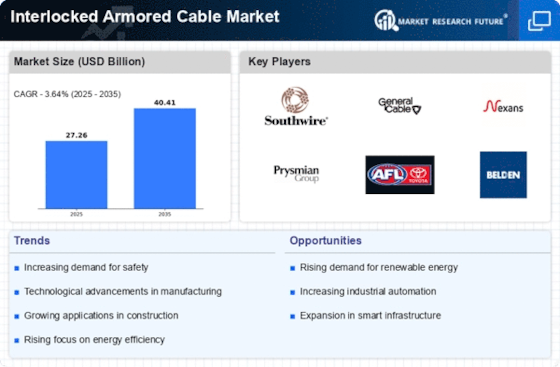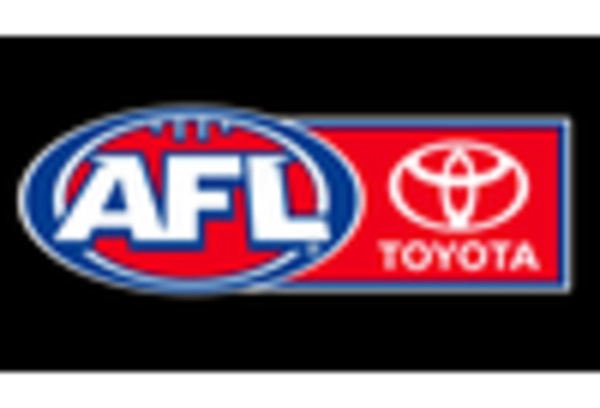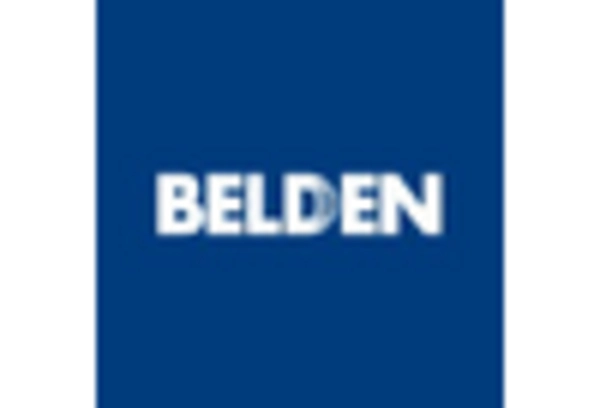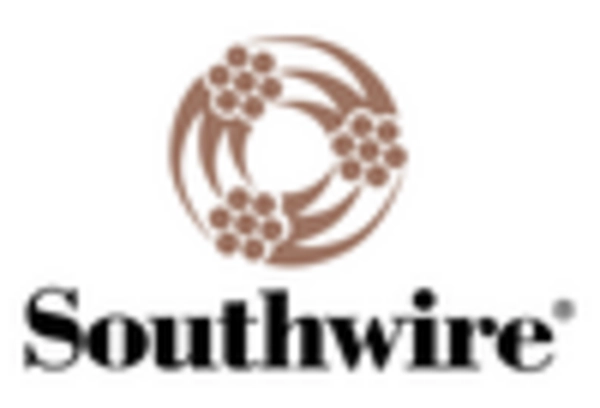Focus on Energy Efficiency
The Interlocked Armored Cable Industry. As industries and governments strive to reduce carbon footprints, there is a growing demand for energy-efficient electrical solutions. Interlocked armored cables, which minimize energy loss and enhance system reliability, are increasingly being adopted in various applications. Market analysis indicates that the energy efficiency sector is projected to grow at a rate of around 6% annually, driven by regulatory frameworks and consumer awareness. This trend is likely to boost the demand for interlocked armored cables, as they align with the objectives of energy conservation and sustainable development.
Increased Adoption of Automation
The shift towards automation in various industries, including manufacturing and energy, is likely to propel the Interlocked Armored Cable Market. As industries seek to enhance efficiency and reduce operational costs, the integration of automated systems becomes essential. This transition necessitates reliable and secure electrical connections, which interlocked armored cables provide. Data suggests that the automation market is expected to grow substantially, with a projected increase of around 10% annually. Consequently, the demand for interlocked armored cables, which can withstand harsh conditions and provide consistent performance, is anticipated to rise, further driving market expansion.
Growing Telecommunications Sector
The telecommunications sector's rapid growth is another significant driver for the Interlocked Armored Cable Market. With the increasing demand for high-speed internet and advanced communication networks, the need for reliable cabling solutions has surged. Interlocked armored cables are particularly suited for outdoor installations, where they can endure environmental challenges. Recent statistics indicate that the telecommunications industry is set to expand at a rate of approximately 8% per year, driven by the proliferation of 5G technology and the Internet of Things (IoT). This growth is expected to create substantial opportunities for interlocked armored cable manufacturers, as they cater to the evolving needs of this dynamic sector.
Rising Infrastructure Development
The ongoing expansion of infrastructure projects across various sectors appears to be a primary driver for the Interlocked Armored Cable Market. Governments and private entities are investing heavily in the construction of roads, bridges, and buildings, which necessitates robust electrical systems. This trend is particularly evident in emerging economies, where urbanization is accelerating. According to recent data, the construction sector is projected to grow at a compound annual growth rate of approximately 5% over the next five years. As a result, the demand for interlocked armored cables, known for their durability and protection against environmental factors, is likely to increase significantly, thereby bolstering the market's growth.
Regulatory Compliance and Safety Standards
The stringent regulatory compliance and safety standards in electrical installations are crucial drivers for the Interlocked Armored Cable Market. As safety regulations become more rigorous, industries are compelled to adopt high-quality cabling solutions that meet these standards. Interlocked armored cables are designed to provide enhanced protection against mechanical damage and environmental hazards, making them a preferred choice for many applications. Recent data indicates that the market for safety-compliant electrical products is expected to grow by approximately 7% annually. This trend underscores the importance of interlocked armored cables in ensuring compliance with safety regulations, thereby driving their demand in various sectors.

















Leave a Comment